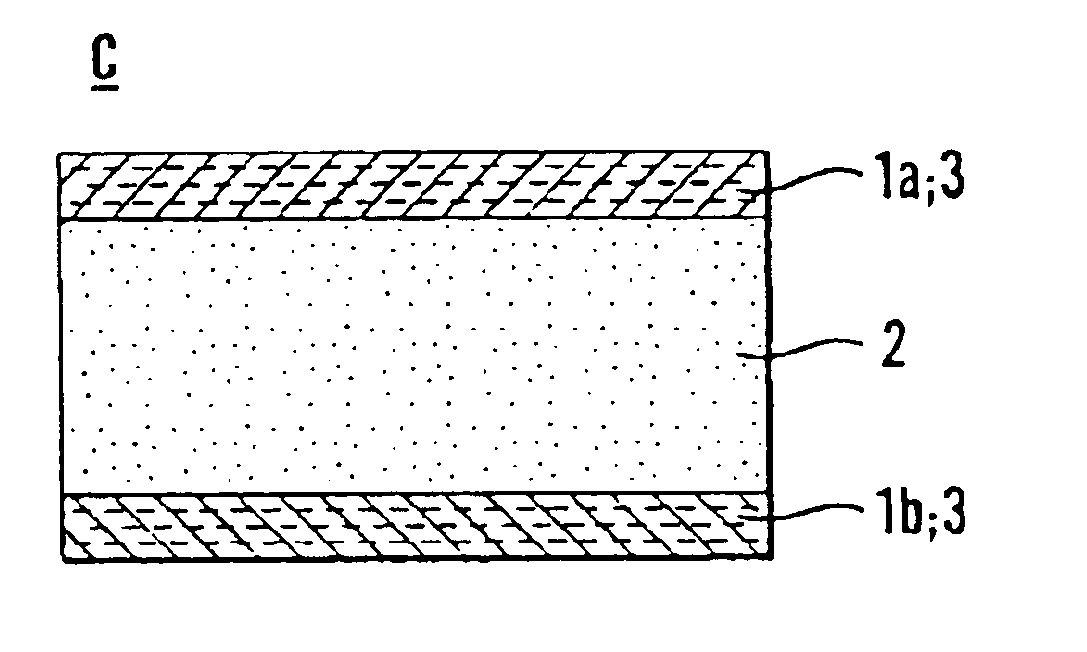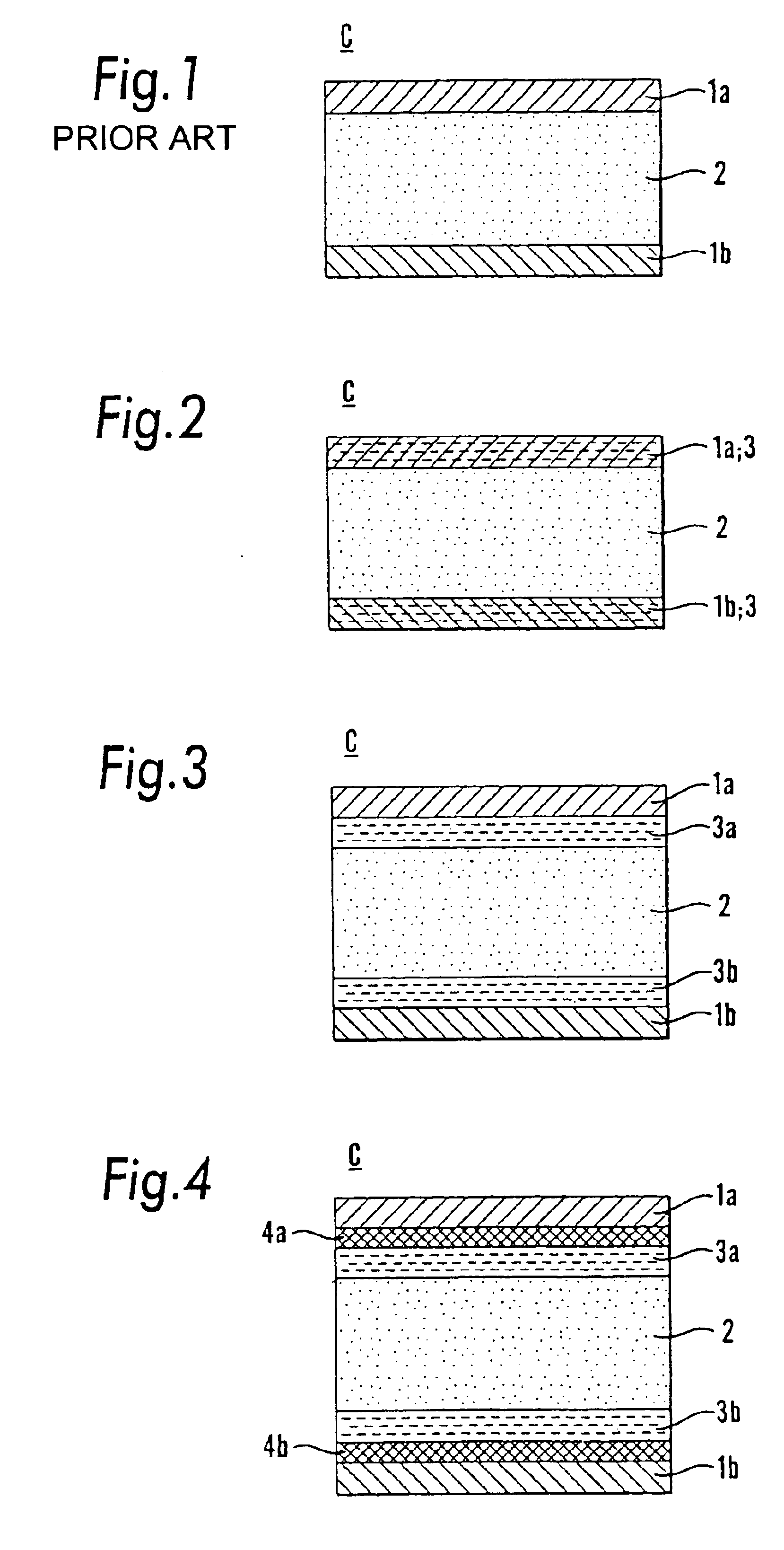Ferroelectric or electret memory circuit
a memory circuit and electret technology, applied in the field of electret memory circuits, can solve the problems of device fatigue, deterioration of electrical response characteristics, device difficulty in switching from one polarization state to another, etc., and achieve the effect of reducing and/or avoiding the effect of fatigu
- Summary
- Abstract
- Description
- Claims
- Application Information
AI Technical Summary
Benefits of technology
Problems solved by technology
Method used
Image
Examples
example 1
Electrodes with a Diamond-Like Nanocomposite (DLN) Film
During recent years, a new type of films have been developed where very good corrosion resistance and barrier properties are combined with an electrical conductivity which can be adjusted over 18 orders of magnitude by varying the composition during film growth (cf., e.g. “Method for forming Diamond-Like Nanocomposite or Doped-Diamond-Like Nanocomposite Films”, U.S. Pat. No. 5,352,493 (1994); (Veniamin Dorfman and Boris Pypkin)). Termed Diamond-Like Nanocomposite (DLN) carbon film, these films are somewhat similar to the more well-known diamond-like carbon (DLC) films (cf., e.g. “Method of forming Diamond-like Carbon Coating in Vacuum”, International published application WO98 / 54376 (A. I. Maslov & al.), but consists of interpenetrating random networks of predominantly diamond bonded carbon stabilized with hydrogen, and glass-like silicon stabilized by oxygen. This C-Si self-stabilized amorphous structure forms the matrix for in...
example 2
Conducting Carbide as Functional Material
The transition metal carbides have high melting points, show good wear resistive properties and are chemically stable. Many of the transition metal nitrides are also good conductors. Here, emphasis is made on tantalum carbide (TaC), titanium carbide (TiC), zirconium carbide (ZrC) and hafnium carbide (HfC). Especially TiC is of interest to combine with the present Ti electrodes. These compounds forms in the NaCl structure and have a complex combination of metallic, covalent and smaller amounts of ionic bonds. The resistivity depends on the crystalline perfection and is typically 30−50·10−8 Ωm.
Thin films of this material are typically formed using glow discharge techniques e.g. reactive magnetron sputtering. Methods to form good quality films are well developed and the materials are for instance, used as diffusion barriers, wear resistive coatings, and optical coatings.
example 3
Conducting Oxide as Functional Material
This includes binary or ternary oxides, doped / undoped. Typical deposition techniques are CVD / spin (Sn2O3:In, SnO2:F, ZnO:Al) and sputtering (LSMO, RuO, IrO2, ITO).
PUM
 Login to View More
Login to View More Abstract
Description
Claims
Application Information
 Login to View More
Login to View More - R&D
- Intellectual Property
- Life Sciences
- Materials
- Tech Scout
- Unparalleled Data Quality
- Higher Quality Content
- 60% Fewer Hallucinations
Browse by: Latest US Patents, China's latest patents, Technical Efficacy Thesaurus, Application Domain, Technology Topic, Popular Technical Reports.
© 2025 PatSnap. All rights reserved.Legal|Privacy policy|Modern Slavery Act Transparency Statement|Sitemap|About US| Contact US: help@patsnap.com



